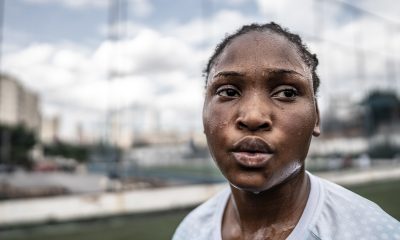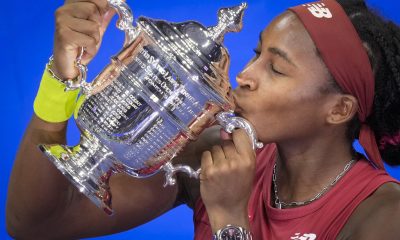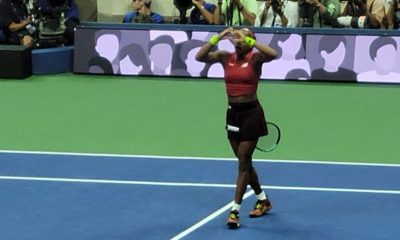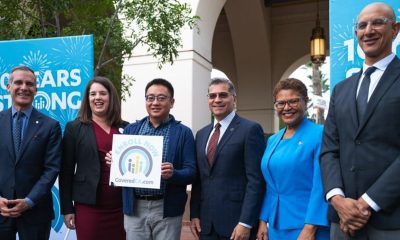Sports
Serena Williams Grinds out Victory in Indian Wells Return

Tennis fans hold a sign for Serena Williams as they wait for her to pass by before she faces Monica Niculescu, of Romania, in their match at the BNP Paribas Open tennis tournament, Friday, March 13, 2015, in Indian Wells, Calif. (AP Photo/Mark J. Terrill)
Beth Harris, ASSOCIATED PRESS
INDIAN WELLS, Calif. (AP) — Serena Williams was a mess playing her first match at Indian Wells in 14 years. Her game was erratic and her emotions were off the charts in response to a warm welcome from the fans, a sharp contrast to the booing that drove her away as a teenager.
Williams defeated Monica Niculescu 7-5, 7-5 Friday night in a wildly inconsistent performance that included 48 unforced errors and 12 aces.
Williams rallied from a 5-3 deficit in the first set and recovered after blowing three leads in the second set, finally winning on her fourth match point in her first tournament since earning her 19th Grand Slam title at the Australian Open in January.
“I feel like the nerves have kind of gone away,” she said. “I’m glad I was able to do this. It definitely feels like one of the biggest and one of the proudest moments of my career.”
A serious-looking Williams walked onto the court wearing headphones, then slipped them off and raised her right arm to acknowledge the sustained applause as she was introduced.
“But up until that moment I didn’t really know if it was the right thing for me to do. I feel like that’s when I felt it was the right thing,” she said. “And receiving the love from the crowd here, it really meant a lot to me.”
The world’s top-ranked women’s player had stayed away from the BNP Paribas Open since winning the 2001 title as a 19-year-old, getting booed by the fans for what happened a day earlier, when she was to play older sister Venus in a semifinal and Venus withdrew because of injury 20 minutes before the start.
A young black girl waved a sign reading “Straight Outta Compton,” the Los Angeles suburb where the Williams sisters first learned tennis from father Richard.
“I feel like I’ve already won this tournament. I don’t feel like I have to actually hold the trophy at the end of this,” Williams said. “I feel like I’m already holding up a trophy. I have never felt that way before. Just being here is a huge win. Not only for me, but for so many people. It’s a wonderful feeling.”
Williams closed out the 2-hour match when Niculescu netted a backhand volley. After a quick handshake, Williams waved to the crowd, but there was none of the jumping and pirouetting that often marks her victories.
“We love you, Serena!” a male fan bellowed during the coin toss at the net. Billionaire Larry Ellison, who owns the tournament, was on his feet applauding Williams as she jogged to the baseline near his seat for the warmup. He was later joined by John McEnroe and billionaire Bill Gates.
Niculescu, ranked 68th in the world, was affected by the reception, too.
“I’m happy the crowd was really nice,” she said.
Williams had played just one Fed Cup match since winning in Australia and her rustiness showed. On her third match point, she netted a backhand return of Niculescu’s 79-mph serve. She had two match points on Niculescu’s serve in the 10th game, committing unforced errors both times, including a backhand she had plenty of time to make.
Williams’ mother Oracene, sister Isha, her coach and agent watched as Williams fell behind 2-0 in the opening set of the second-round match.
Niculescu used her wicked topspin to blunt Williams’ power game, taking a 5-3 lead. Williams held at love before winning the last two games to take the first set, in which there were five service breaks. Williams double-faulted away one game before serving out another at love.
“I’ve never played anyone like her before. She’s obviously an unbelievable fighter,” Williams said. “She really made me work really hard. It was good to have a really, really tough match.”
A small group of fans waited near an entrance gate in the hours beforehand, with one holding a hand-lettered sign that read “Welcome back Serena.”
Williams is 15-1 with two titles to her credit in three previous appearances in the desert.
“Even though things were weird and tough, I was able to do the work,” she said. “I’m just pleased about that.”
Williams’ match was one of 11 involving Americans, with six advancing and five losing.
Sloane Stephens upset 13th-seeded Angelique Kerber 7-6 (6), 6-2 in second-round play and Varvara Lepchenko defeated fellow American Sachia Vickery, 6-4, 6-1.
On the men’s side, Donald Young, Steve Johnson and Jack Sock advanced to the second round.
Williams’ return was welcomed by tournament officials, although the event had hardly stagnated in her absence. It is one of the best attended outside of the four Grand Slam events, with close to 450,000 expected through the gates during the two weeks.
Venus Williams hasn’t changed her mind about boycotting Indian Wells. In 2001, Richard Williams said he heard racial taunts from the crowd, and there was speculation that he dictated which sister would win their meetings.
Now 33, Serena said it wasn’t one thing in particular that brought her back to the tournament that she had vowed she would never play again.
“Everyone in general has come a really long way,” she said. “Everyone, especially the WTA, USTA, they really step up to the plate. I really appreciate all the love, not just for me, but for a lot of other players that they show.”
Copyright 2015 The Associated Press. All rights reserved. This material may not be published, broadcast, rewritten or redistributed.
###
Activism
McClymonds High Names School Gym for Star Graduate, Basketball Legend Bill Russell
William “Bill” Felton Russell was born on Feb. 12, 1934, and died on July 31, 2022. He achieved fame as a U.S. professional basketball player who played center for the Boston Celtics of the National Basketball Association (NBA) from 1956 to 1969. He was the centerpiece of the Celtics dynasty that won 11 NBA championships during his 13-year career.
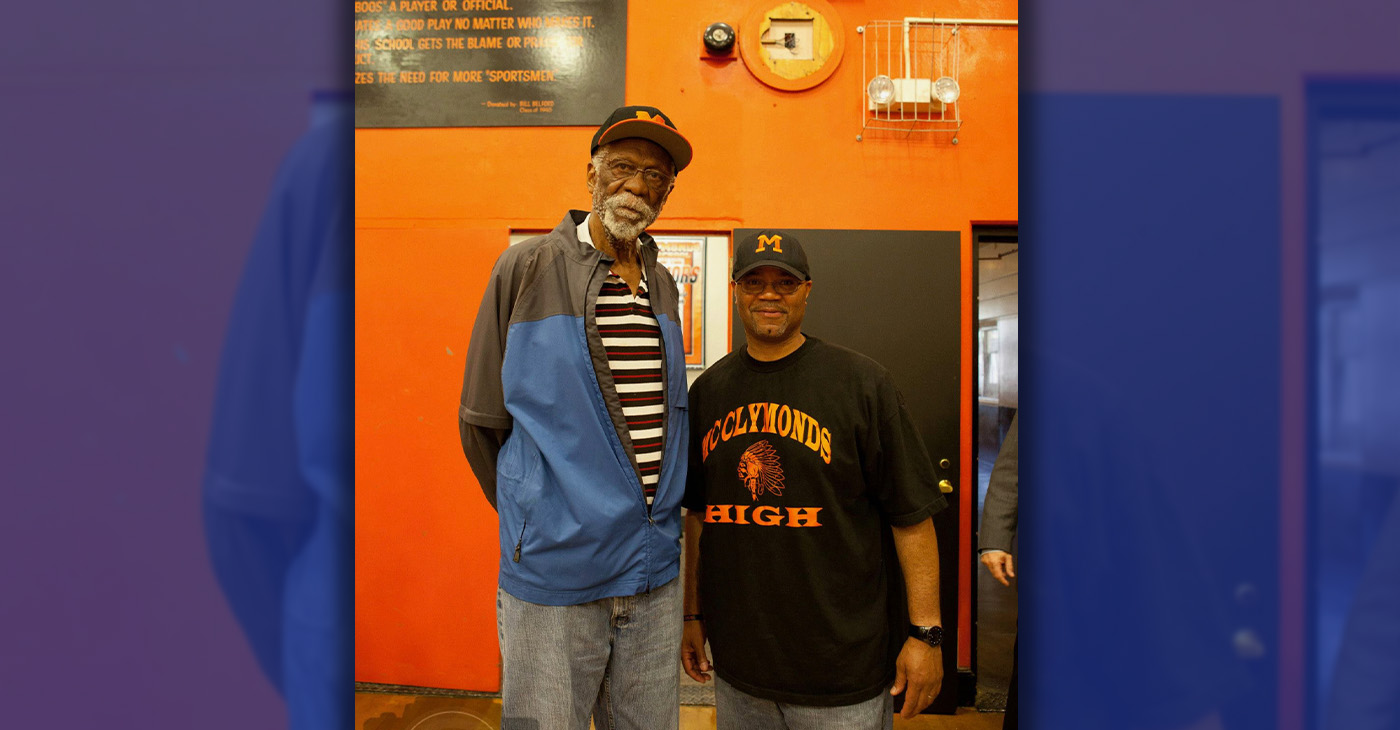
By Ken Epstein
West Oakland’s McClymonds High School, “the School of Champions,” this week named the school’s gymnasium in honor of one of its most famous graduates, basketball legend Bill Russell (class of ’52).
William “Bill” Felton Russell was born on Feb. 12, 1934, and died on July 31, 2022. He achieved fame as a U.S. professional basketball player who played center for the Boston Celtics of the National Basketball Association (NBA) from 1956 to 1969. He was the centerpiece of the Celtics dynasty that won 11 NBA championships during his 13-year career.
Russell is widely known as one of the greatest basketball players of all time. In 2011, he received the Presidential Medal of Freedom, the country’s highest civil honor, from President Barack Obama for Russell’s contributions to basketball and the Civil Rights Movement.
The McClymonds’ naming ceremony was held on Wednesday, the same day as Russell’s birthday. Oakland leader Bill Patterson, a longtime friend of Russell’s, was scheduled to cut the ribbon at the reopening of the gym, which had been closed for several months for renovation. Russell’s daughter Karen was scheduled to attend the ribbon cutting.
Russell’s name and signature are now printed on the gymnasium floor.
Patterson was working at DeFremery Park when he met Russell. “I befriended him as a boy and during his years at University of San Francisco” said Patterson. “We stayed friends for the rest of his life.”
Said McClymonds Principal Darielle Davis, herself a McClymonds graduate, “We are excited to honor Bill Russell for his sports accolades and because he broke color barriers. He is part of our legacy, and legacy is really important at McClymonds.”
Brian McGhee, community schools manager at McClymonds and former football player at UC Berkeley, said that Russell meant a lot to him and others at the school. “He was a beacon of light and hope for West Oakland,” he said. “He did a lot for sports and for civil rights.”
Starting in 2018, Ben “Coach” Tapscott worked with Patterson and other McClymonds grads, community members, and former coaches to encourage the Oakland Board of Education to endorse the naming of the school gym, which finally happened recently.
“We worked hard to make this happen,” said Tapscott. “He’s an important part of McClymond’s history, along with a lot of other famous graduates,” he said.
Activism
OPINION: Politics, Football and Identity in Trump’s America
If you haven’t noticed, all Americans are engaged in an even bigger game that means so much more than the Super Bowl. Our democracy is falling apart.
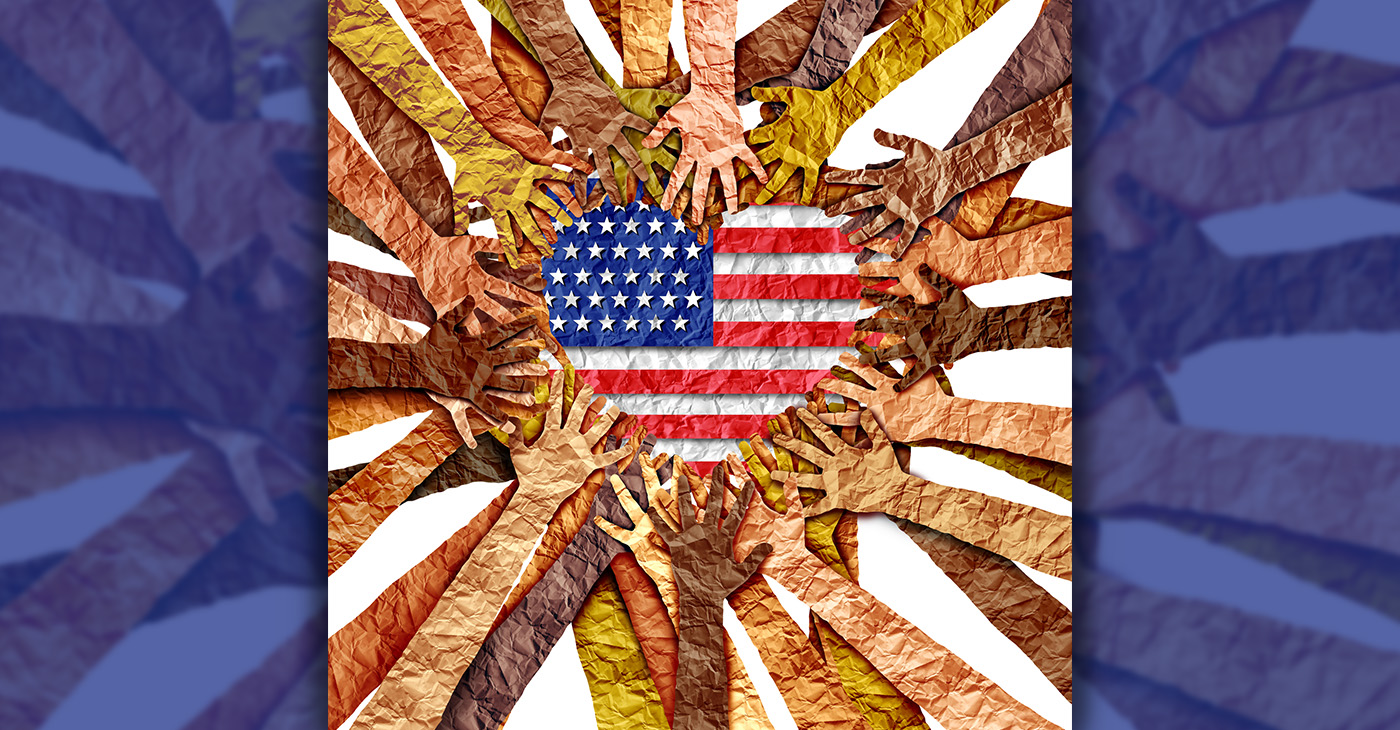
By Emil Guillermo
Two Filipino American stories made headlines recently.
First, Nikko Remigio, the Filipino and African American kick returner for the Kansas City Chiefs, did not win Super Bowl LIX.
The other, Alameda’s Rob Bonta said no to running for governor. I don’t blame him. It’s not like a mass of people wanted him to run.
But I did.
Whenever there is a Filipino American in a place you don’t expect, I’m rooting for that person.
As California’s Attorney General, Bonta is probably the most active defender among Blue States pushing back against Trump’s Extreme-Right agenda.
I’d like to Bonta run for California’s top job, but he’s better off waiting in line. The Democrats need a spot for Kamala Harris, and Bonta not running obliges the hierarchy.
History can wait. Bonta’s just 52.
Harris has held off speculation of her next move, saying she just moved back to the state. But it seems governor is the path for her.
For now, Bonta needs to continue taking the fight to Trump in the courts.
Football and Identity Politics
My dad, whose birthday would have been Super Bowl weekend, came to the US in 1928 as a colonized Filipino, an “American National,” where he couldn’t be a citizen, vote, own property or even marry the person he wanted.
Not if they were White.
Still, he believed in America. He never gave up.
Sort of like Nikko Remigio.
My dad would have loved Nikko.
If you haven’t noticed, all Americans are engaged in an even bigger game that means so much more than the Super Bowl. Our democracy is falling apart.
You want to get passionate about Eagles and Chiefs?
Let’s be passionate about our Founding Fathers, too.
Nikko didn’t change the game. He touched it three times and provided more yards than all of KC’s running backs.
That’s all I needed to see.
He’s our Filipino guy.
Detractors may call it “identity politics.”
People don’t seem to understand the fight for visibility. To be recognized. To be seen. It’s all wrapped up in the big idea of Civil Rights.
I was nowhere near as good as Nikko when I played. But when you are blessed to play football, you play your hardest.
For me, that was when I was 12 and 13 playing Pop Warner football in San Francisco. I was MVP for my team as a running back.
But I was ashamed of my dad. He wasn’t like the other dads. And I remember going to the team banquet to retrieve my trophy alone.
I didn’t realize it probably meant more to him than I thought.
I wish I had shared my MVP moment with him like Nikko shared his joy with his dad, Mark, born in Seattle to two Filipino immigrants, and his mom, whose mixture of Black and White made Nikko the picture of diversity.
Filipino American and Black and White at the Super Bowl.
But don’t forget, there is one game bigger.
The Super Bowl for Democracy. We’re battling for it every day Trump pushes a cockamamie idea that shakes the foundation of our Democracy.
About the Author
Emil Guillermo is an award-winning journalist and commentator. Watch his micro-talk show “Emil Amok’s Takeout/What Does an Asian American Think?” on www.YouTube.com/emilamok1 Or join him on http://www.patreon.com/emilamok
Bay Area
Tina Thompson: Champion, Legend, and Pioneer of Women’s Basketball
Known for her signature red lipstick, Thompson displayed confidence and style on the court, becoming an icon both for her gameplay and her individuality. Her ability to score from anywhere on the floor, combined with her defensive prowess, made her one of the league’s most formidable players.
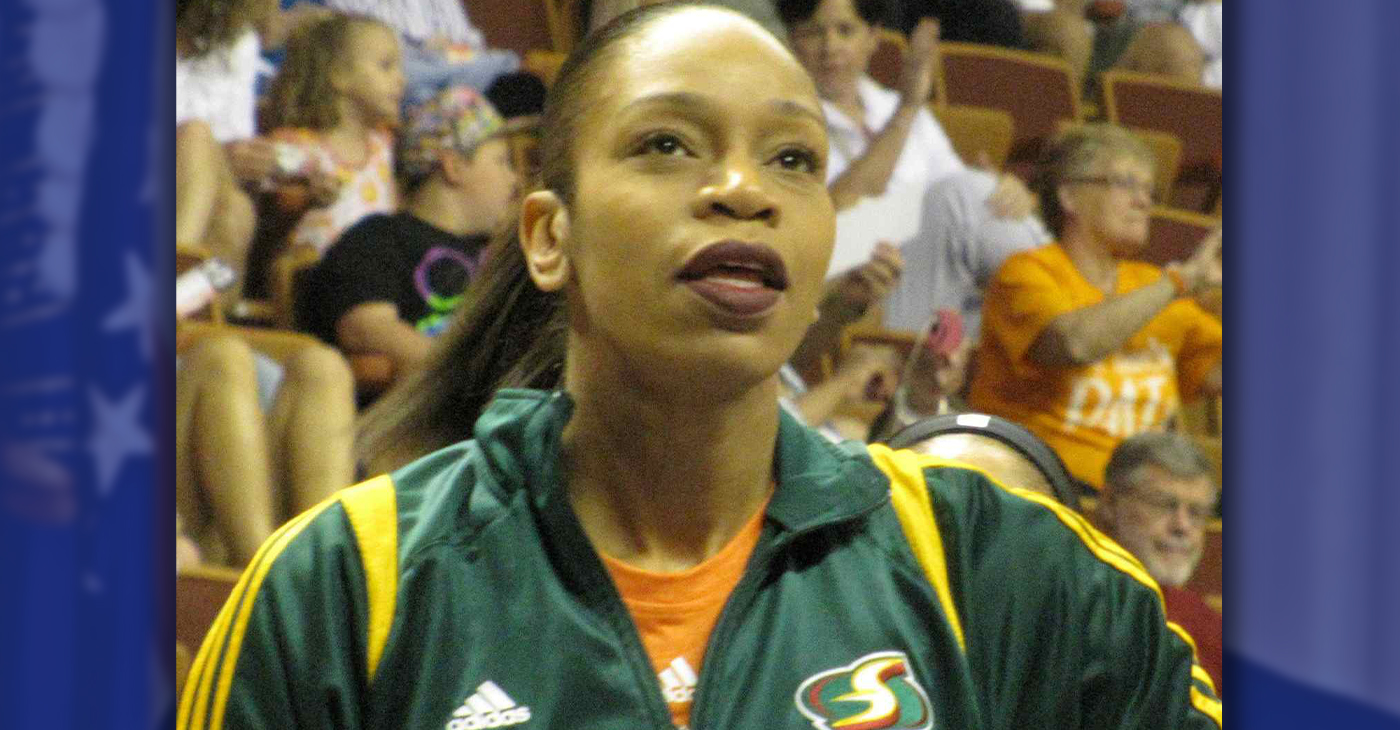
By Tamara Shiloh
The establishment of the Women’s National Basketball Association (WNBA) in 1996 was a turning point for women’s sports, creating a professional platform for female basketball players to showcase their skills at the highest level. Among the trailblazers who helped launch the league, Tina Thompson stands out as the first African American woman drafted into the WNBA.
Tina Thompson was born on February 10, 1975, in Los Angeles, California. Raised in a basketball-loving household, she quickly developed a passion for the game. Thompson improved her skills on the playgrounds of South Central Los Angeles, often playing against boys, which toughened her game and fueled her competitive edge.
She attended the University of Southern California (USC), where she became a standout player for the Trojans. Known for her versatility, scoring ability, and relentless work ethic, she earned All-Pac-10 honors multiple times and cemented her reputation as one of the top collegiate players in the nation.
When the WNBA held its first-ever draft on April 28, 1997, Tina Thompson made history as the league’s first African American player to be drafted. Selected as the first overall pick by the Houston Comets, she joined a team that would go on to dominate the early years of the WNBA.
Tina’s selection was a historic moment, symbolizing the league’s commitment to showcasing diverse talent. As a Black woman in a pioneering role, Thompson carried the hopes of aspiring African American female athletes who dreamed of playing professional basketball.
Tina wasted no time making an impact in the WNBA. As a key member of the Houston Comets alongside legends Cynthia Cooper and Sheryl Swoopes, she helped lead the team to an unprecedented four consecutive championships from 1997 to 2000. The Comets’ dynasty became the gold standard for excellence in the league’s early years.
Known for her signature red lipstick, Thompson displayed confidence and style on the court, becoming an icon both for her gameplay and her individuality. Her ability to score from anywhere on the floor, combined with her defensive prowess, made her one of the league’s most formidable players.
Over a career spanning 17 seasons, Tina established herself as one of the WNBA’s all-time greats. She retired as the league’s leading scorer, a record she held until it was broken by Diana Taurasi. She was a nine-time WNBA All-Star and was named to multiple All-WNBA teams, cementing her status as one of the sport’s legends.
In 2018, Thompson’s contributions to basketball were recognized with her induction into the Naismith Memorial Basketball Hall of Fame. The honor underscored her influence not just as a player, but as a trailblazer for African American women in sports.
After retiring from professional basketball, she transitioned into coaching, using her experience and knowledge to mentor young athletes. She has served as a head coach at the collegiate level, inspiring the next generation of players to pursue excellence both on and off the court.
As a role model and advocate, Thompson has consistently emphasized the importance of education, empowerment, and self-belief. Her story resonates with countless young women who see in her the embodiment of perseverance and success.
Tina Thompson is presently in her third season as an assistant coach at the University of Texas at Austin.
-
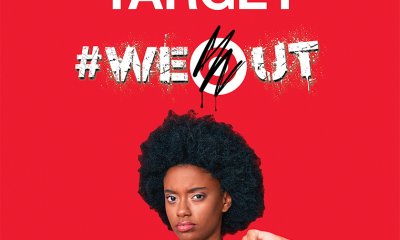
 #NNPA BlackPress4 weeks ago
#NNPA BlackPress4 weeks agoTarget Takes a Hit: $12.4 Billion Wiped Out as Boycotts Grow
-

 Activism3 weeks ago
Activism3 weeks agoUndocumented Workers Are Struggling to Feed Themselves. Slashed Budgets and New Immigration Policies Bring Fresh Challenges
-

 #NNPA BlackPress4 weeks ago
#NNPA BlackPress4 weeks agoBREAKING Groundbreaking Singer Angie Stone Dies in Car Accident at 63
-
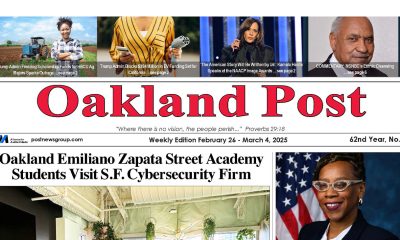
 Activism4 weeks ago
Activism4 weeks agoOakland Post: Week of February 26 – March 4, 2025
-

 #NNPA BlackPress4 weeks ago
#NNPA BlackPress4 weeks agoNAACP Legend and Freedom Fighter Hazel Dukes Passes
-

 Arts and Culture4 weeks ago
Arts and Culture4 weeks agoBeverly Lorraine Greene: A Pioneering Architect and Symbol of Possibility and Progress
-

 #NNPA BlackPress4 weeks ago
#NNPA BlackPress4 weeks agoTrump Kicks the Ukrainian President Out of the White House
-

 #NNPA BlackPress4 weeks ago
#NNPA BlackPress4 weeks agoApple Shareholders Reject Effort to Dismantle DEI Initiatives, Approve $500 Billion U.S. Investment Plan






